Ancient scripts are not only a means of preserving the history and culture of a nation; the script itself boasts a fundamental reflection of the nation’s image – both hidden and revealed. Cracking the meaning of the enigmatic scripts used by our ancestors to record and communicate is akin to finding an elusive bridge that connects the present day and the age of antiquity. It’s like a holy grail that dispels the riddling effect of ignorance towards one’s past. An elixir that clears our minds of the cobwebs that blur our way to knowing the richness of our a race, nation and people.
But what if these ancient scripts became more than just a cryptic collection of codes, letters and pictographs? What if it leads some through the truths and fabrication of our past – or something in the middle? Our very own Baybayin script bears an interesting tale that juggles both fact and fiction in its origin and might lead us closer to its importance.
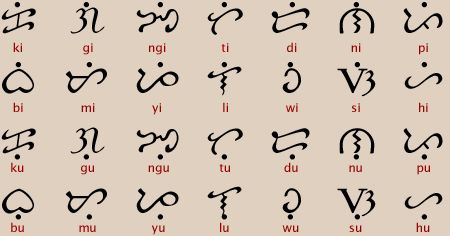
To Spell The Name of God
Dubbed as the “Da Bathala Code” (an allusion to the then popular conspiracy novel by Dan Brown “The Da Vinci Code”), Paul Morrow of the The Pilipino Express explored some of the claims that Baybayin, our ancient script known to be developed from the Brahmic script of India, possessed a meaning beyond its actual function. Leaning toward mysticism and divinity, Baybayin characters were said to act like pictographs that signifies various meanings from its shapes. Take for example the Baybayin word for Bathala as shown below:

Supposedly, the above scripts that spells that name of the Tagalog supreme sky god is a combination of the whole divinity of nature as it encompasses both masculine, feminine and divine breath or life. The first script Ba (b) was said to represent the female aspect as it imitates the shape of the genital of a woman and also because it is the first letter of the Tagalog word “Babae”. Same goes for the syllable La (l) which represent male qualities for the word “Lalake” begins with this. There is also a possible phallic like figure to the script. Lastly, Ha (H) which looks like a wave of the wind (for it is the also the first letter for “Hangin” or wind) is considered as the divine breath that connects the dual forces; unifying them into one single being and therefore making man and woman a deity.
In some cases, Bathala was also spelled in Baybayin like the image below:

Instances when the syllable Ta is used, its equivalent Baybayin script was said to representing lightning bolt which can be a symbol for divine spark.
Morrow questions a lot of points in the theory. The Baybayin model used in their theory was done by the Spanish press in 1593 and no one knows what the earliest form of Baybayin looked like – which means the scripts might be significantly different. Another, is the word Bathala cannot be derived from the Tagalog words Babae, Hangin and Lalake for its roots trace to the Indian Sanskrit “Bahttara” or “Lord” as stated by Ferdinand Blumentrit in one of his letter to Rizal in 1887, which was also agreed by Pardo De Tavera in his book “El Sancristo en La Lengua Tagalog” (1887).
The theory was filled with interesting tidbits, but its veracity is uncertain. Yet there are still some back stories behind these claims which surprised me. Two known people in our history and culture were said to be the first proponents of the idea of Baybayin as a mystical script.
Tolention and Paterno on Baybayin’s True Nature
Besides his undeniable talent in sculpting, which made him one of our National Artist, Guillermo Tolentino could also be considered a scholar of Baybayin. He published his own work “Ang Wika at Baybayin Tagalog” (1973) which discussed the alleged “real” identity of the Tagalog language and culture and suggested it may be among it the oldest in Asian, and possibly the world. Tolentino narrated the story of a Tagalog poet named Katalon who according to him was the true inventor of Baybayin as a gift to a beautiful woman named Bai.
Pedro Paterno, an infamous figure during the conception of the Philippines as nation and known for being a “turncoat”, took a much deeper and controversial approach. This became the foundation of the theory interpreting the word Bathala as having a greater function. From his book “La Lingua Civilizacion Tagalog”, Paterno explains a lengthy dissection of Baybayin’s true nature wherein the Baybayin translation of Bathala was examined. He stated that Baybayin comes from word baibai or babae (female). Furthermore, while affirming that the Baybaylin script for Ba and La are all symbolizing Male and Female, the Baybayin script for Ha that looks like a wave of wind represents a ray of light which stand for God. Therefore the light merging Male and Female forms the name of Bathala, the creator God.
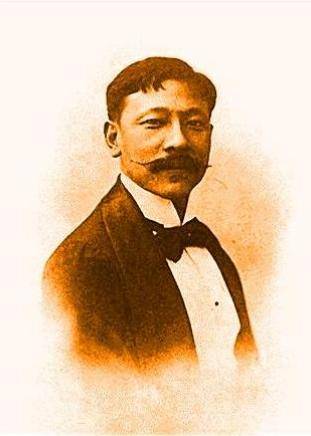
Paterno adhere to the Spaniard’s culture, particularly to Catholicism, which eventually become the inspiration to the myth of Bathalismo and Tagalismo; a system of belief he posited as the ancient Tagalog religion, but also borrowed details and beliefs from Catholicism – such as a Virgin impregnated by “a ray of light” (akin to the holy spirit) that conceived a son that would later start propagating the said religion. Paterno thus introduced us to an alternate version of Tagalog history. Although a good ingredient for a conspiracy theory, it failed to sway his contemporaries in believing and ultimately was left untouched and unnoticed because its sources seemed either made-up or fabricated.
With his penchant for betrayal and switching allies on the fly, Paterno’s reliability was dubious even in the field of our culture and history. Paterno and Tolentinos claims on Baybayin and Bathala were dismissed, but they did open the door for the theorist of Da Bathala Code.
An Attempt to Build A History
In defence of Paterno and Tolention, one must first realize that these people share a mission towards fortifying and glorifying the national history and tradition of our country – something that seems to be missing. Ever since the Spanish set foot on our land and reconstructed our history, followed by the “westernization” by the US, we have been lacking a historical cultural identity. Perhaps Tolentino and Paterno’s motive was in line with Jose E. Marco who was notorious for forging historical documents and mixing in false information in his claims – most famously when he rewrote the history of his own province, Negros Occidental. These three are all guilty of a crime that history itself might not forgive, and their intentions might be the same as what William Henry Scott stated when he said what made made Marco to do such bold yet erroneous acts of altering history: “…he seems to have responded, early and late, to a deep Filipino yearning for illuminating institutions like law codes and political confederations in a dark past.”
Resil B. Mojares indicated in his book “Isabelo’s Archive” that many Filipinos before (and even today, I believe) aim to fill the “void” – referring to the missing awareness and knowledge of our past before colonization. Their yearning pushes them on a zealous mission to collect various documents and files in search of “pure” and authentic information about our ancestors. It was quiet unfortunate though that some like Jose E. Marco, and the likes, hastily took actions that are deemed as a grievous sin in the face of truth for the sake of filling the void that unfortunately keeps on getting larger and larger.
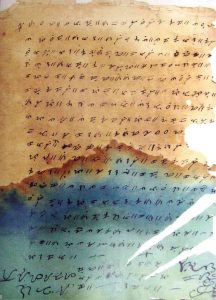
Baybayin, along with other national treasures, may be a key in filling a large portion of our cultural void. Imagine having our very own national/native script – like that of Japan, Thailand and other neighboring Asian countries that successfully preserved their own tradition and culture without compromising their progress as nation. That would definitely lift our spirits as Filipinos to a whole new level. Yet today, it seems Baybayin is nothing more than a phrase you encounter in textbooks and history classes. For so many years now it has not been used by Filipinos to write their own thoughts and emotions – to communicate with fellow countrymen and to help them understand one another.
Despite the lack of government or cultural promotion, Baybayin is consistently resurfacing in different forms through efforts made by Filipinos who remain unwavering in resuscitating our nation’s vital culture. There are modern studies that explore fascinating revelations that perhaps would have Tolentino and Paterno nodding in unison if given the chance to hear the findings of Dr. Julius Comandante.
More than just a Script
The study of anthropologist Dr. Comandante put Baybayin in a new light as it showed Baybayin’s form originated from the Taklobo, or giant clam. He stated during his presentation in 2011 that our ancestors derived the ancient scripts from the shape and contour. He added that the giant clam was an important tool utilized by pre-colonial Filipinos – not just as a mundane utensil or ornaments, but was also an important part of rituals and ceremonies.

Dr. Comandante pushed his study even further when he found out through experiment that every Baybayin scripts holds a specific energy that can be used for healing ailments or growing plants. By writing a Baybayin script in a piece of paper and placing it on a certain part of the body, one can channel the energy that resides in the said syllable.
Other findings of Dr. Comandante includes a free from dance called Sabai, and a local martial known as Bangsi which was also inspired by the scripts of Baybayin. He insisted that through calisthenic exercise such as dancing, we could familiarize ourselves in Baybayin through muscle memory.
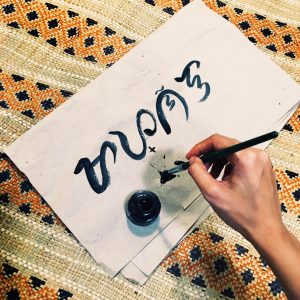
Survival of a Lost Treasure
Several indigenous scripts that are associated with, or share the same lineage of Baybayin are still used by some tribes and communities in the Philippines. The Mangyans of Mindoro are among the few who still write Hanunoo and Buhid scripts; both an offshoot of Brahmic scripts like Baybayin. According to the study presented in 2014 by Emerencia Lorenzo Catapang of the Mangyan Heritage Center, these ancient script managed to survive because the Mangyan tribes live in the mountains and thus prevented influence from the outside to their own way of life. Their traditional literature Ambahan, a poetry consisting of seven syllables per line and rhyming-end syllables, was beautifully engraved in Bamboo slats using pointed tools such as knife. Antoon Postma, a Dutch Linguist and Anthropologist translated 261 Ambahan poems into English and published it into a book which he named Treatise of Minority. The Ambahan poetry,plus the elaborate scripts possess an artistic value and societal function that are used during special events in the Mangyan community – like marriage, birth and many more.
Others who have a propensity for art utilize Baybayin into calligraphy, graphic arts and is even seen in the Philippines growing resurgence in tattoo culture which they proudly display together with their pride as a true born Filipino. Kristian Kabuay, a Filipino-American citizen of California found the importance of Baybayin which made him initiate a workshop abroad and in Manila to teach young children how to write Baybayin. A group called Hibla Sanghabi headed by Leo Castro conducts research and workshops to promote Philippine culture wherein the main focus is on reviving Baybayin script.
The Philippine government is also (slowly) putting its efforts in preserving Baybayin and helping the younger generation to become more aware of it. The Baybayin Bill , also known as National Script Act of 2011, was refiled through Senate Bill 433 in 2016 which further aims the following under Section 4. “Promoting of Baybayin as the National Writing System of the Philippines”:
A) requiring all manufacturers of locally produced processed food products to inscribe Baybayin scripts and their translation on their labels/containers
B) mandating LGUs to incorporate appropriate Baybayin script in signage for street names, public buildings/facilities and other public services buildings.
C) requiring newspapers and magazine to publishers to include a Baybayin translation of their official name
D) disseminate knowledge and information about Baybayin script through appropriate government agency by giving reading materials in all levels of public and private educational institutions and even in all public and private agencies and offices and to conduct training for staff that will handle such documents.
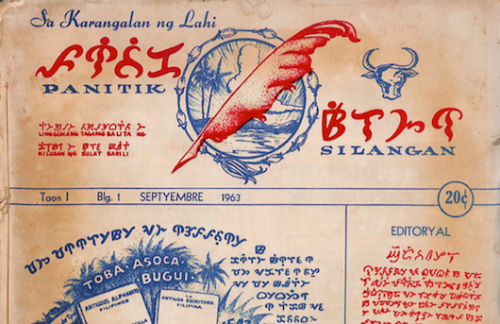
To Spell the name of a Nation
To end this article, I would like to confirm to all readers that I am not promoting “inventing history” for the sake of producing a compelling document or record that will awaken our pride as Filipinos, nor act like an apologist for Paternos and Tolentino with their own version of Baybayin’s history. History is a sensitive field that requires accuracy and truth as its own pillar. Then again, we all know that many other cultures have their own share of hidden history that is still left to be discovered or intentionally covered up by the governing authority – building a whole nation on a cornerstone of lies that keep it in the darkness for so long that it is impossible to unveil the truth in the eyes of the people. Once it is found, expect that it will shatter the foundations of their belief and destroy their stronghold of ignorance. Such is the price to pay when we decide to change and manipulate the truth even if the intention or motives are benign. It begs us to re-examine the age old saying, “the end justifies the means”.
Luckily, we everyday Filipino citizens can still uphold truthfulness as a commendable value, despite all odds. We can remember our ancestors when they resisted alterations to their Baybayin for convenience to the Spanish. After stating their gratitude they kindly declined the changes. Pedro Andres De Castro writes in 1776, “it cannot be introduced into their writing system because it was against the intrinsic nature and character given the Tagalog language by God and it would be equivalent to destroying in one stroke the whole syntax, prosody and orthography of their language”.
After countless ups and downs in our history, there lies a single truth that remains in the past, present and hopefully into our future; a desire for our nation to claim a cultural glory that is rightfully deserved.
ALSO READ: The Beautiful History and Symbolism of Philippine Tattoo Culture
Currently collecting books (fiction and non-fiction) involving Philippine mythology and folklore. His favorite lower mythological creature is the Bakunawa because he too is curious what the moon or sun taste like.


